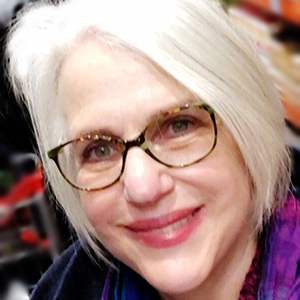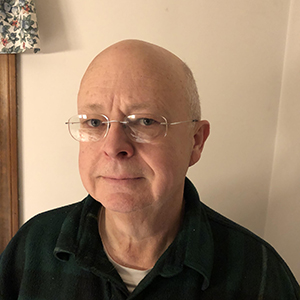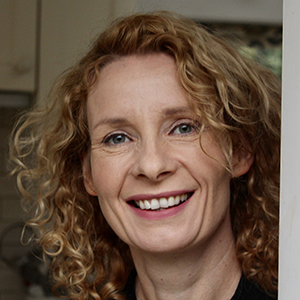Walter Isaacson: It’s 1945, and we’re in a testing lab at the Raytheon Company, a military contractor in Waltham Massachusetts. Percy Spencer, a self-taught and highly respected electrical engineer is working on a magnetron, a high-powered vacuum tube that produces mini radiation waves, or microwaves used to power radar systems. Decades earlier, Percy’s imagination had been captured by the heroics of the wireless operators aboard the sinking Titanic. Thanks to a recent invention, a wireless SOS signal was sent as the ship went down, alerting rescuers and saving hundreds of lives. Not long after that, the first world war broke out. And 18 year old Percy enlisted in the Navy with a burning desire to learn everything he could about radio technology.
Working on the magnetron that day in Waltham, Percy notices something odd. The peanut cluster candy bar in his pocket has suddenly, mysteriously melted. His natural curiosity gets the better of him, and he begins to investigate why it melted. What he ultimately discovers will transform the way we cook. I’m Walter Isaacson, and you’re listening to Trailblazers, an original podcast from Dell technologies.
Speaker 2: How did you happen to change over to this modern way of cooking?
Speaker 3: All you have to do is follow the recipe.
Speaker 2: Don’t look now, but your pot is boiling over.
Speaker 4: The proof of the pudding is in the eating.
Speaker 2: Let’s have a look inside a few kitchens.
Speaker 4: That was a lot to expect from a kitchen utensil.
Speaker 5: You know I can’t wait to try some of these recipes.
Walter Isaacson: It’s not every day that a scientist working at a defense company stumbles upon a new way to cook food. But innovations in home cooking are as rich and varied as the history of technology itself. In fact, the history of food can’t be separated from the technology used to prepare or cook that food.
Bee Wilson: Behind every single item of food that we eat, there is a technology.
Walter Isaacson: Bee Wilson is a food historian, and author of Consider the Fork, a history of how we cook and eat.
Bee Wilson: Behind every loaf of bread, there is an oven. Behind every bowl of soup, there’s probably a pot and a wooden spoon, or maybe a can and a can opener. And I find this a fascinating idea and many of the technologies that we just take for granted were at the time completely revolutionary.
Walter Isaacson: In this episode, we’ll hear the stories behind some of those technologies, including Percy Spencer’s accidental discovery. But first, let’s go back to the very beginning. If you thought it all started with the discovery of fire, you’d be wrong.
Bee Wilson: The original cooking disrupter is something with is even older than fire, which is the knife. If you think of cutting tools as being the very, very oldest thing that humans were using to do something to food, to change it, to make it easier for our teeth to cope with, the knife is the oldest of them all.
Walter Isaacson: The earliest knives date back some 3.3 million years, when Woolly mammoths, and Saber-toothed cats roamed the planet. And when early humans began to use sharpened bones and rocks to cut raw meat. That’s more than a million years before we discovered how to tame fire. And once we learned how to tame fire, somebody had the idea of thrusting a hunk of meat into it.
Bee Wilson: Roasting is by far the oldest form of cooking. We sometimes now just will think, roasting, boiling, baking, they’re all roughly equivalent, but roasting pre-dates boiling and baking by somewhere in the region of two million years.
Walter Isaacson: And so, roasting, this cooking meat on a fire, was a defining moment in our history, when we really became fully human. And not just because our food became easier to eat and digest, but because it provided extra energy to help our brains grow. This prehistoric barbecue method was the one and only way of cooking for thousands of years. Eventually, about 30,000 years ago we came up with another novel, and more indirect method. Hot stone cooking. But something else happened in those first millennia of cooking that is so significant, some experts call it an industrial revolution. It was the creation of pottery. Bee Wilson.
Bee Wilson: I see the beginning of pottery in the kitchen not just as a kind of industrial revolution, but the beginning of true cooking. With pottery we move from just shoving something in or near a fire, to the beginnings of cuisine, which is the calm intermingling of flavors and ingredients in a pot. Suddenly, all of these possibilities opened up.
Walter Isaacson: With the birth of agriculture, pots became commonplace. And while the technology of pots has changed very little, the way they are heated has. In the 17th century, the first European settlers in America began outfitting their homes with chimneys, and fire grates, paving the way for the ovens we use today. The earliest version of our modern oven was invented around 1800 by a scientist named Benjamin Thompson, but his smokeless cooking range, which used several smaller enclosed fires instead of a single large one was ahead of its time. In the ensuing years, large complicated cast iron ranges would be the status symbol of the industrial age.
Bee Wilson: With the cast iron kitchen ranges of the Victorian era, for the first time you have middle class people expecting that they will have a device in their homes which is something that they could bake something in, they could sort of roast something in it, and it’s the first multi-functional kitchen tool.
Walter Isaacson: The daily management of the fire, however, and the cleaning of the range was still time consuming. An onerous task. Gas stoves, which were invented in the late 1800s would have considerably lightened the cook’s load. But there were valid concerns about safety, and the technology to run them hadn’t yet caught up. As the evolution of the stove continued it’s steady march to the kitchen ranges of today, other smaller appliances began to pop up. Originally, in the days of the roman empire, bread was toasted over an open fire, to make it last longer. But the first mechanical toaster came about in 1893, thanks to Scottish Scientist Alan McMasters. There was a catch though. The inner workings of the appliance often melted when you used it. A decade or so later, American metallurgist Albert Marsh made an alloy strong enough to be a heating element. But that had problems too. It could only heat bread on one side, and it had a tendency to burn. Finally, in 1921, with Charles Strite, a mechanic from Minnesota, and his patent for a pop-up toaster with springs and a timer, the toaster found a permanent place in the market, and in our kitchens.
While toasting bread was once a way to preserve it before the 19th century, making any other food last from meat to vegetables could be done only by drying, canning, smoking, or salting. Ice houses were for the rich. Bee Wilson.
Bee Wilson: If you were poor, or even middle class, you only got very cold things when it was winter. And there was form of refrigeration. Suddenly in the 19th century, scientists figured out that there were various kinds of gases that could be used, which could work on the ages old principal, evaporation.
Walter Isaacson: In 1805, American inventor Oliver Evans built a simple system that used vapor to cool. It would be another century before companies like Kelvinator and Frigidaire began to mass produce electric fridges. But there were concerns about these early bulky appliances that ran all day and night. One of the biggest issues was that the gases they used, methyl chloride and sulfur dioxide could be, and had been lethal. 1930 was a big year for the fridge industry. Not only was the gas Freon-12 introduced, and adopted by all fridge manufacturers, 80% of US homes now had electricity. And for the first time, refrigerators outsold ice boxes, becoming a staple of the American kitchen. Freon was eventually phased out of use after it was discovered to cause damage to the earth’s ozone layer. That same decade, Irving Naxon, a prolific American inventor came up with another revolutionary tool. Inspired by his mother’s stories about growing up in a Jewish settlement in late 19th century Russia. They couldn’t work or cook while observing the sabbath. So families developed a clever way to make sure they had a hot meal on Saturday nights. This is Irving’s daughter, Lenore Naxon.
Lenore Naxon: On Friday afternoon, her mother would take a crock, and would throw whatever kind of root vegetable there was, and beans, and whatever piece of meat she had into it, and send her to the town bakery, where the ovens we’re going to be turned off for the sabbath.
Walter Isaacson: Irving’s mother would place the crock, a large clay pot in the bakery’s oven, still hot from the day’s baking. And the meal would cook in the lingering heat.
Lenore Naxon: And then she would come back on Saturday night when the sabbath was over, and bring it home, and there would be this tsholnt, or stew, and so dad thought gee, how can I replicate that, how can I create a slow, even heat, so that something can cook over time?
Walter Isaacson: In May 1936, Irving applied for a patent for a cooking apparatus, one of some 200 patents he’d receive in his lifetime, including one for the electric frying pan. But it’s the legacy of his cooking pot that runs deepest. Originally dubbed the Naxon beanery, he took it to the market in the 1950s.
Lenore Naxon: It was sold a lot commercially for neighborhood coffee shops, and drug counters that sold food so that restaurateur could keep soups and chilis in it all day.
Walter Isaacson: In 1970, a company called Rival purchased Naxon utilities with the beanery almost as an afterthought. The owner of Rival asked their in-house home economist to experiment with it. She whipped up a book of recipes, and the next year it hit the market, rebranded as the Crock-Pot.
Lenore Naxon: It became such a big deal, and the Crock-Pot as it was newly branded became absolutely ubiquitous. And part of it had to do with the fact that over the course of years after the second World War that women were going into the workforce. And they needed an inexpensive efficient way to cook family meals. And this provided the perfect way for that to happen.
Walter Isaacson: Food historian Bee Wilson.
Bee Wilson: So much of modern cooking technology can’t really be understood without this wider story about women taking increased amounts of paid work outside the home. If you look back to the 19th century, there was very little interest in saving labor, and I think it was partly because when the days when people had either a wife that they just expected to do everything for them, or servants, there wasn’t that much interest in saving the labor, if the labor in question was not your own. Whereas suddenly, in the 1970s, you have this completely different relationship emerging between women, machines, and the kitchen.
Walter Isaacson: Lenore Naxon.
Lenore Naxon: It was developed in a way to make life in the kitchen easier and if the proviso is that the kitchen is a woman’s, a wife’s province, then it is a way to have her spend less time there, and do things with less cost and more efficiency.
Walter Isaacson: The Crock-Pot used little more electricity than it took to power an incandescent light bulb, a boon during the energy crisis of the 1970s. Helping to fuel the success of the device. In 1975, a peak sales year for the Crock-Pot, 3.7 million units were sold. As efficiency became more important to the american consumer, few appliances could match the speed of Percy Spencer’s invention, which brings us back to his story, back in the radar lab in 1945.
George: My full name is George Rodman Spencer Junior, and my grandfather was Percy Lebaron Spencer, the inventor of the microwave oven.
Walter Isaacson: Percy Spencer’s insatiable curiosity about new technologies led him to become a renowned scientist. When the war ended, he and his company Raytheon were eager to turn their attention to more domestic concerns. So when the candy bar melted in his pocket, as he worked on a magnetron that day, he took on the challenge to understand what happened.
George: I remember him telling me that he went up and got an egg, and they had this rather disparaging engineer, not really believing that well, you can use this to heat stuff. So he put the egg behind a baffle, and turned on the magnetron, and the engineer looked over the baffle, and the egg blew up in his face. And then he brought in the next day some popcorn for everyone, and that was sort of the beginning of it.
Walter Isaacson: A few weeks later, in October 1945, Percy applied for a patent to use microwaves for the purpose of heating food. And Raytheon set to work building the first microwave oven. The Radar Range, as it was called, was released two years later.
George: If you’re interested in buying a multi-thousand dollar microwave oven, that was also capable of tracking airplanes back in 1949, you were one of like three people. So it was not very popular. They were big as a refrigerator, weighed three hundred pounds, was water cooled, would take 20 minutes to warm up before you could cook anything, but it would do a potato in about 10 seconds, so it was overpowered, maybe 10 times more power than what you can get nowadays.
Walter Isaacson: While the original Radar Ranges did have commercial applications, restaurants for instance, or reheating food on airplanes, it was not a success. It would take another 20 years before countertop versions slowly began to appear in American kitchens. In the 1960s, Japanese tech company Sharp began to manufacture more affordable microwaves. And in the 1980s, sales took off. By 1997, 90% of American homes had a microwave oven. Food historian Bee Wilson.
Bee Wilson: In houses where microwaves were adopted enthusiastically, they completely changed the structure of the way people ate.
Walter Isaacson: While microwave ovens certainly changed our kitchens forever, they didn’t really solve the problem of getting a full meal on the table. With the exception say of a TV dinner, you generally didn’t use the microwave to cook your entire meal, but rather to heat portions separately. It became an invaluable tool for home cooks, but there was still a space for something more. For years, busy tech professionals Robert Wang and his wife worked long hours and struggled to find time to make healthy meals for their kids. Take-out, and fast food were common. Robert remembers one meal at McDonald’s.
Robert Wang: While I was sitting there looking at the kids playing in the play structure, I been thinking what if there’s automated cooking machine which can help me do the cooking? That would be wonderful. That’s the beginning of the story of Instant Pot.
Walter Isaacson: For the uninitiated, the Instant Pot is an electric pressure cooker with multiple functions. It cooks, sautes, steams, and even makes yogurt. When Robert first had the idea, he came at it pragmatically, considering the needs of the modern family.
Robert Wang: We are different from our mother or our parents and grandparents, and we have different priorities. We have different preferences, and also we are a lot more adventurous. I noticed three trends at the time. Number one, we have less and less time.
Walter Isaacson: Number two, he took note of the high rate of obesity in America.
Robert Wang: And the third trend at the time, if you remember, that gas price was sky high. So energy efficiency is very much on the top of everybody’s mind. Of course, people become more environment conscious, they want to stay green.
Walter Isaacson: Robert took these trends and began working on his cooker, investing a hefty amount of his personal savings.
Robert Wang: Actually three hundred thousand dollars of my personal saving.
Walter Isaacson: With speed and health a top priorities, the pressure cooker was a no-brainer. The very first pressure cooker was invented back in 1679, by french scientist Denis Papin, and went through several iterations before going electric in 1991, with a patent filed by Chinese scientist Yong-Guang Wang. That was Robert’s starting point.
Robert Wang: Nowadays modern invention never start from ground up. You’re really standing on the shoulder of the giants, just to quote Isaac Newton. It is incremental innovation. I took the Chinese invention of electrical pressure cooker, and adding additional sensors to it, so that I can achieve better cooking result, fully automated cooking process. So that’s how Instant Pot was invented.
Walter Isaacson: With a nod to the Crock Pot, he added a slow cooker feature to the list of functions. He was also determined to make it safer than earlier pressure cookers. When his product was ready to go to market in 2010, he began by approaching bricks and mortar retailers. Once driving five Instant Pots from his home in Ottawa to a retailer in Montreal.
Robert Wang: On my way back I thought no, this will not work. And in fact, it took the store over a month to clear the five Instant Pot. That’s not enough to sustain a company. And that’s how we discovered Amazon.
Walter Isaacson: The online marketplace was a boon for Instant Pot. One promotion sold over 200,000 units in a single day. But what Robert found most valuable were the reviews. He read every one.
Robert Wang: We know what they like about the Instant Pot, what they hate, and what they wish for. So that gave me enough feedback so that I can develop the second generation of Instant Pot.
Walter Isaacson: One reviewer suggested they add a yogurt making function. So they did. The next generation became a bestseller in Amazon’s pressure cooker category.
Robert Wang: That was the time that I put a mission statement for the company, that we are going to put an Instant Pot in every kitchen.
Walter Isaacson: In 2013, that seemed like a bold idea, but it inspired a cult-like following. With thousands of people writing rapturous reviews on social media. But for all its popularity, the multicooker is not without its critics. In 2017, the New York Times pointed out a number of shortcomings, including the way it cooked chicken, vegetables, and its difficulty with turning out anything meant to be crispy, or crunchy. Robert acknowledges there’s still work to be done on his invention. But as sales have continued to climb, calling the Instant Pot a fad, like so many other culinary gadgets is harder to do.
Robert Wang: It’s absolutely not. It’s solving your daily problem. It’s a such multifunctional tool that’s so essential to people. And also when I read all the Amazon reviews, many people call it a game changer, a life changer. It had profound impact to people’s life, so if that’s the case, then it cannot be a fad.
Walter Isaacson: Indeed, Instant Pot sales remain strong. But, will it grace the counter of every kitchen as Robert hopes, or end up in the back of the cupboard like so many kitchen gadgets before it? Bee Wilson is optimistic.
Bee Wilson: To me, these tools make me feel very hopeful about the future of the kitchen, because there’s something, on the one hand deeply low tech about them. You can see the Instant Pot stretching all the way back to those original pots that our ancestors 10,000 years ago were making something starchy and filling and delicious in, and in a way the Instant Pot isn’t so different, except that it’s so much easier to use.
Walter Isaacson: Today, we have access to a dizzying number of tools that make cooking easier, or more interesting. Instant Pots, microwaves, Crock-Pots, blenders, juicers, mandolins, Paco Jets, the list goes on. And yet, as Bee notes, night after night, all around the world, so many of us will reach for the same basic few things our ancestors used thousands of years ago. A knife, a spoon, a pot, and something to heat it over. We’re deeply connected to our food, and how we prepare it. We still boil, we still cut and chop, we still roast over a barbecue’s open fire. It’s an innate relationship that largely remains intact, no matter what technology has beeped and stirred its way onto our countertops. And perhaps that’s how it will always be. I’m Walter Isaacson, and you’ve been listening to Trailblazers, an original podcast from Dell Technologies.
In our next episode of Trailblazers, we’ll talk to the people behind the real life moneyball, from the man who revolutionized sports analytics, to legendary sports broadcasters and athletes. We’ll hear firsthand how the big leagues were forever changed for players and fans alike. Thanks for listening.
 Now we’re cooking.
Now we’re cooking. Home on the range.
Home on the range. The next wave.
The next wave. Lenore Naxon
is one of the three daughters of Irving Naxon, who invented the Crock-Pot in 1940, one of his many kitchen innovations.
Lenore Naxon
is one of the three daughters of Irving Naxon, who invented the Crock-Pot in 1940, one of his many kitchen innovations.
 Rod Spencer
is an inventor and the grandson of Percy Spencer, who invented the microwave oven in 1946.
Rod Spencer
is an inventor and the grandson of Percy Spencer, who invented the microwave oven in 1946.
 Robert Wang
is the Founder and CEO at Instant Brands Inc. and the inventor of the Instant Pot.
Robert Wang
is the Founder and CEO at Instant Brands Inc. and the inventor of the Instant Pot.
 Bee Wilson
is a food writer and the author of Consider the Fork: A History of How We Cook and Eat.
Bee Wilson
is a food writer and the author of Consider the Fork: A History of How We Cook and Eat.